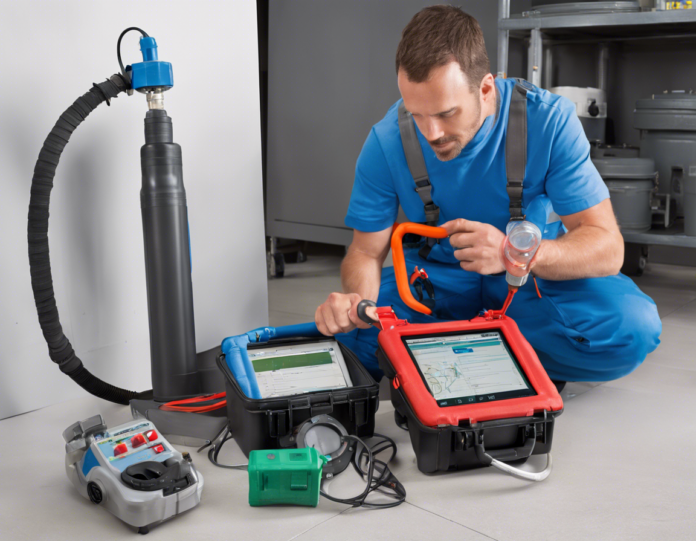In industries where the presence of gases or liquids is crucial, leak detection equipment plays a vital role in ensuring safety, preventing environmental hazards, and maintaining operational efficiency. From manufacturing plants to pipelines and storage facilities, the ability to promptly identify and address leaks is paramount. Leak detection equipment comes in different forms and utilizes various technologies to detect leaks, ranging from simple handheld devices to sophisticated automated systems. In this comprehensive guide, we will delve into the world of leak detection equipment, exploring its types, applications, benefits, and key considerations for choosing the right equipment for your specific needs.
Types of Leak Detection Equipment
1. Gas Detectors:
Gas detectors are essential for detecting leaks of various gases, including combustible gases, toxic gases, and oxygen deficiency. They work by monitoring the concentration of targeted gases in the air and triggering an alarm when these levels exceed preset thresholds. Gas detectors are commonly used in industrial settings, laboratories, and confined spaces to ensure worker safety.
2. Liquid Leak Detectors:
Liquid leak detectors are designed to identify leaks in pipelines, tanks, and storage systems containing liquids such as water, fuel, chemicals, or oils. These detectors can employ different technologies like ultrasonic sensors, laser-based systems, or electrochemical sensors to detect the presence of liquids where they shouldn’t be.
3. Pressure and Flow Meters:
Pressure and flow meters are instrumental in detecting leaks by monitoring changes in pressure and flow rates within a system. Sudden drops in pressure or unexpected fluctuations in flow can indicate the presence of a leak. These meters are commonly used in plumbing systems, HVAC systems, and industrial processes.
4. Infrared Cameras:
Infrared cameras are valuable tools for detecting leaks in pipelines, tanks, and equipment by capturing thermal images. Leaks often cause temperature variations that can be identified through infrared imaging, allowing for quick localization and repair of leaks.
Applications of Leak Detection Equipment
Leak detection equipment finds applications across various industries and settings, including:
-
Oil and Gas Industry: In oil refineries, petrochemical plants, and natural gas facilities, leak detection equipment is crucial for preventing explosions, environmental contamination, and loss of product.
-
Chemical Industry: Chemical manufacturing plants rely on leak detection equipment to safeguard workers, facilities, and the environment from exposure to hazardous chemicals.
-
Water Management: Water utilities use leak detection equipment to identify leaks in pipelines and distribution systems, conserving water resources and minimizing infrastructure damage.
-
HVAC Systems: Heating, ventilation, and air conditioning systems benefit from leak detection equipment to maintain efficiency, reduce energy consumption, and ensure indoor air quality.
-
Transportation: Leak detection equipment is used in transportation systems like pipelines, tankers, and railcars to prevent spills, accidents, and product losses during transport.
Benefits of Using Leak Detection Equipment
-
Early Detection: Leak detection equipment helps in identifying leaks at their early stages, preventing escalation of the issue and minimizing damage.
-
Safety: By promptly detecting leaks of hazardous substances, this equipment contributes to maintaining a safe working environment for personnel and the surrounding community.
-
Environmental Protection: Rapid detection and repair of leaks help in preventing environmental contamination, such as soil and water pollution.
-
Cost Savings: By reducing product losses, preventing equipment damage, and minimizing downtime, leak detection equipment can lead to significant cost savings in the long run.
-
Compliance: Many industries are subject to regulations regarding leak detection and emissions control. Using the appropriate equipment ensures compliance with relevant standards and guidelines.
Key Considerations for Choosing Leak Detection Equipment
When selecting leak detection equipment for your specific needs, consider the following factors:
-
Type of Substance: Determine the type of substance (gas or liquid) you need to detect leaks for, as different detectors are designed to work with specific types of substances.
-
Detection Sensitivity: Evaluate the sensitivity of the equipment to ensure it can detect leaks at the required threshold levels, especially for hazardous substances.
-
Response Time: Consider the response time of the equipment, as quick detection is crucial in preventing accidents and minimizing damage.
-
Maintenance Requirements: Assess the maintenance needs of the equipment, including calibration, sensor replacement, and software updates, to ensure continued reliability.
-
Integration Capabilities: If you need to integrate the equipment with existing systems or networks, ensure compatibility and seamless integration capabilities.
Frequently Asked Questions (FAQs)
1. What are the common technologies used in gas leak detection equipment?
- Gas leak detection equipment commonly employs technologies such as infrared sensors, semiconductor sensors, electrochemical sensors, and catalytic bead sensors for detecting various gases.
2. How does ultrasonic leak detection technology work?
- Ultrasonic leak detectors work by detecting the high-frequency sound produced by gas or liquid leaks. By translating these sounds into audible signals, the equipment alerts users to the presence of a leak.
3. Is leak detection equipment suitable for both indoor and outdoor use?
- Yes, leak detection equipment is available in models designed for both indoor and outdoor applications, depending on the environmental conditions and monitoring requirements.
4. Can leak detection equipment be used for preventive maintenance?
- Yes, leak detection equipment is not only reactive but can also be used proactively for preventive maintenance by identifying potential issues before they escalate into significant leaks.
5. Are there portable options available for leak detection equipment?
- Yes, there are portable and handheld options available for leak detection equipment, allowing for ease of use in various settings and quick on-the-spot leak identification.
In conclusion, leak detection equipment is a critical component of safety and operational efficiency in industries dealing with gases and liquids. By understanding the types, applications, and benefits of leak detection equipment, as well as considering key factors in equipment selection, organizations can effectively mitigate risks associated with leaks and ensure regulatory compliance. Whether it’s preventing gas leaks in a refinery or detecting water leaks in a municipal pipeline, investing in the right leak detection equipment can make a significant difference in maintaining a safe and sustainable operation.

